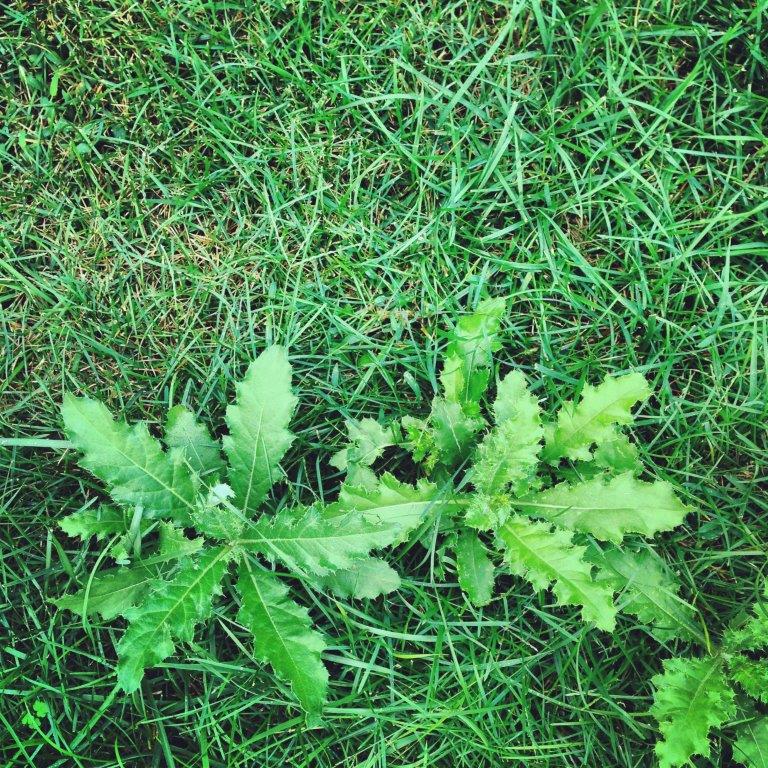Autumn weeds
Author: Stefan Palm Date Posted: 8 April 2024
Autumn, leading into Winter is a prime time for weeds to begin emerging in your lawn. With the extra moisture around and with less competition from Summer active lawns (as they go into Winter dormancy), weeds find the conditions irresistible.
As the weather cools, so does the soil temperature. At the moment, it's falling at about one degree per week, and the result is that weed seeds and bulbs stored in the soil from previous seasons germinate and start to grow, reminding you how persistent they can be!
The most common Autumn and Winter weeds are winter grass, sour sobs and, of course, common broadleaf weeds like thistle, dandelion, creeping oxalis, clover and bindi eye. Have a look at our handy Weed Identification Chart to see which type of weeds you have.
Most lawns will have some weed seeds lying dormant in them, either dropped by birds, previous seasons weeds or transference by mowers from one lawn to another, and this is the reason that you can see a quick flush resulting in a lot of weeds, suddenly. There are some things that encourage the likelihood of excessive weeds, such as very low mowing, insufficient fertiliser and inadequate watering through the growing season. These conditions can weaken the lawn stand resulting in bare spaces which weeds can quickly colonise. Ineffective control measures in previous years can also lead to weed numbers increasing.
Control measures:
Most weeds in a lawn are easily controlled by spraying with a selective herbicide. Selective herbicides target the weeds and, when applied properly, won't harm the lawn. The type of herbicide you use will depend on the weed you are targeting and the type of lawn you have.
Broadleaf weeds:
or broadleaf weeds, use a product containing MCPA and Bromoxynil, such as Amgrow Bin-Die. For larger areas, consider a product such as Bow and Arrow. These chemicals are selective, which means they are specially designed to be sprayed all over the lawn. They will target the weeds and will not affect the grass you are spraying. Generally speaking, broadleaf herbicides take around 10-14 days to kill the weeds. To get the best out of your herbicide, consider adding some wetting agent to the mix. Products like Wetter and Spreader help break the surface tension of the spray droplets to get better coverage on the leaf of the weed. You'll be surprised at how much difference this makes.
Wintergrass:
Wintergrass is just starting to emerge now as the weather cools down. Wintergrass can be controlled by using a herbicide containing propyzamide, such as David Grays Winter Grass Killer. Follow the instructions carefully, and make sure you spray evenly over the whole lawn area. Wintergrass killer is a selective herbicide and is safe to use on couch and buffalo lawns. As this chemical is soil-activated, it is essential that the sprayed area is watered within 24 hours of spraying. If you have winter grass growing in kikuyu turf, then you can't use a propyzamide-based chemical ( such as Wintergrass killer)as a control measure. Your only option here is to apply a pre-emergent herbicide such as Spartan, which will kill the seeds of the Wintergrass weed before they have a chance to germinate. Click here for more info on pre-emergent control of Wintergrass. It would usually be too late in the year to use pre-emergent herbicides (the best time is February / March), however since we haven't had a lot of rain yet and considering the daytime temperatures haven't fallen into the teens, many people may find that their winter grass hasn't emerged yet. If this is the case, you can still apply pre-emergent chemicals now.
Soursobs:
These little blighters are a nuisance, and there is no silver bullet for controlling them in your lawn and garden. Click here for more information on sour sobs and how to control them.
Once you know which types of weeds you have and what chemicals you intend to use to combat them, think about your strategy. It's unlikely that you'll get rid of your weeds with one single spray, especially broadleaf weeds. When tackling weeds like these, plan to spray every 3 to 4 weeks through Winter until they have disappeared. If you'd like to read more about how to spray weeds, have a read of my blog on the subject.
To some degree, weeds will always be an uninvited guest on your lawn at different times of the year, but with some vigilance, you can get on top of them. For more advice on controlling or identifying weeds, give us a call on 8298 0555.
